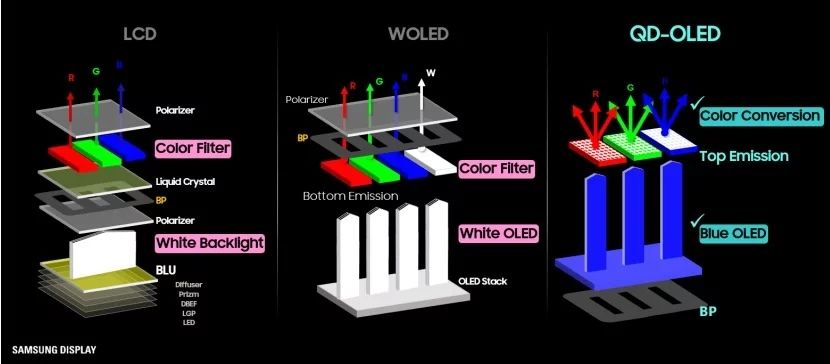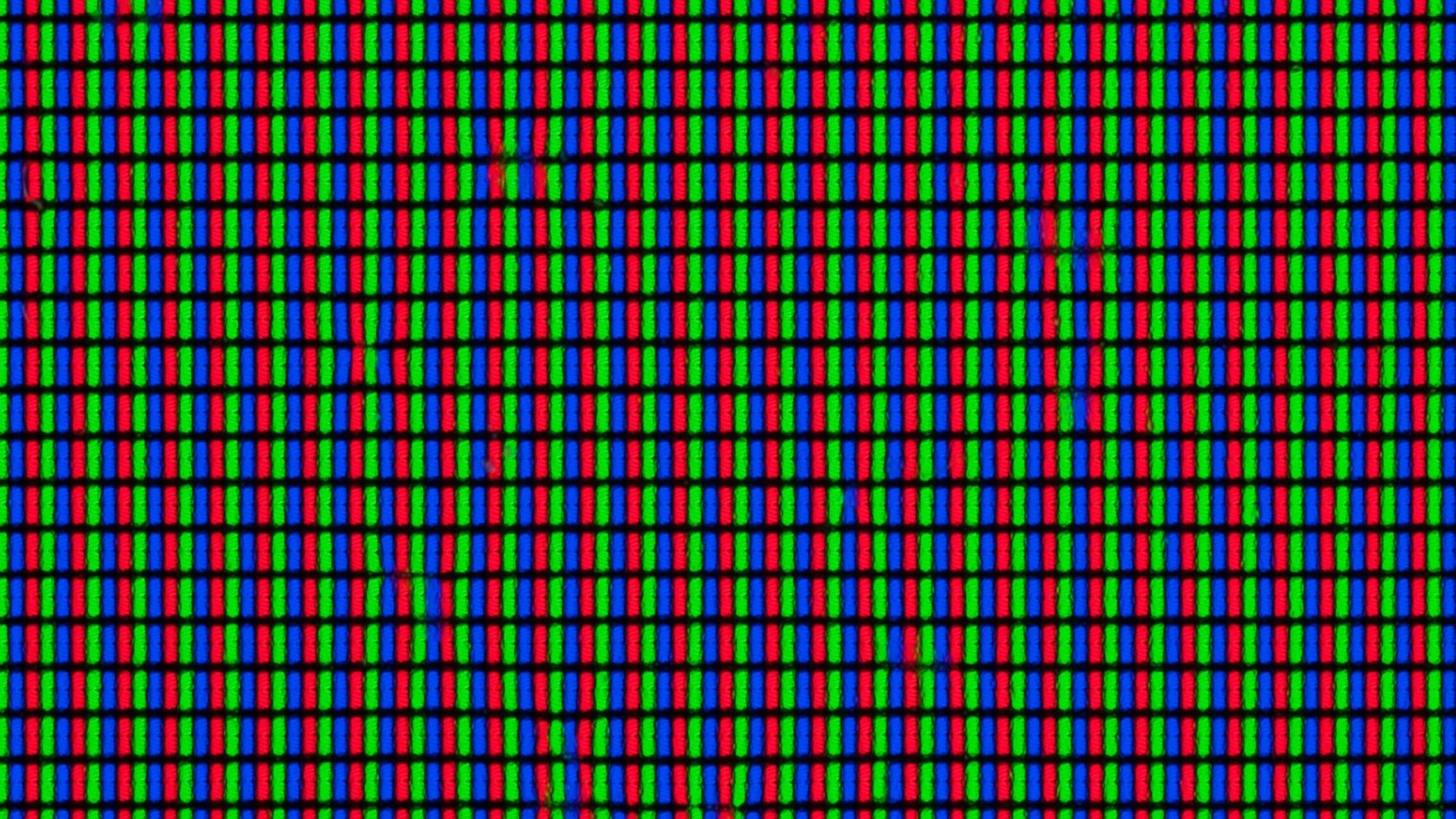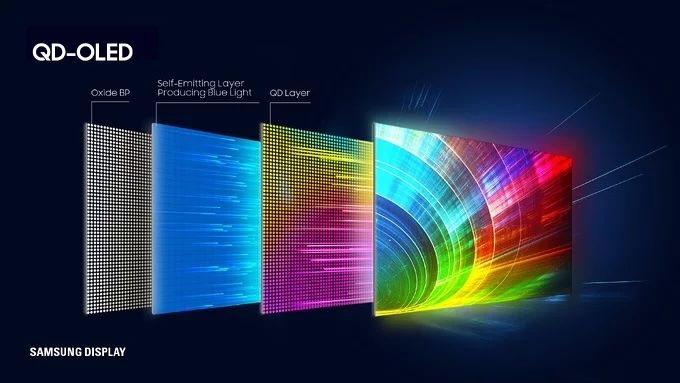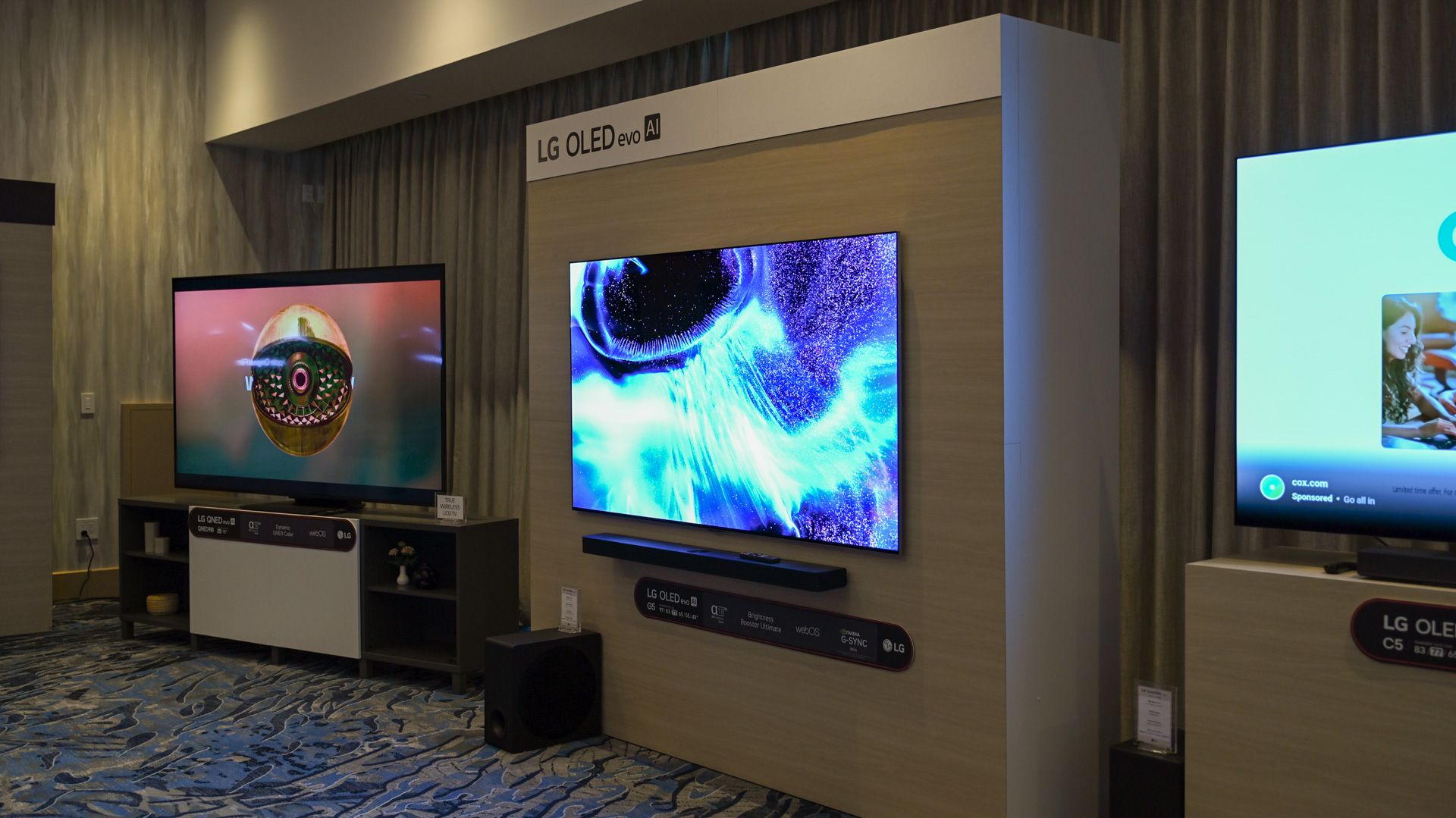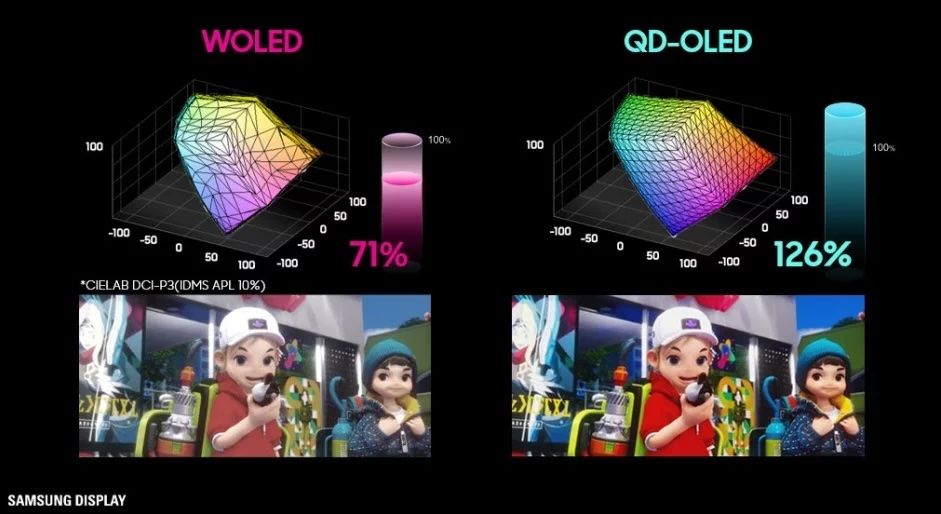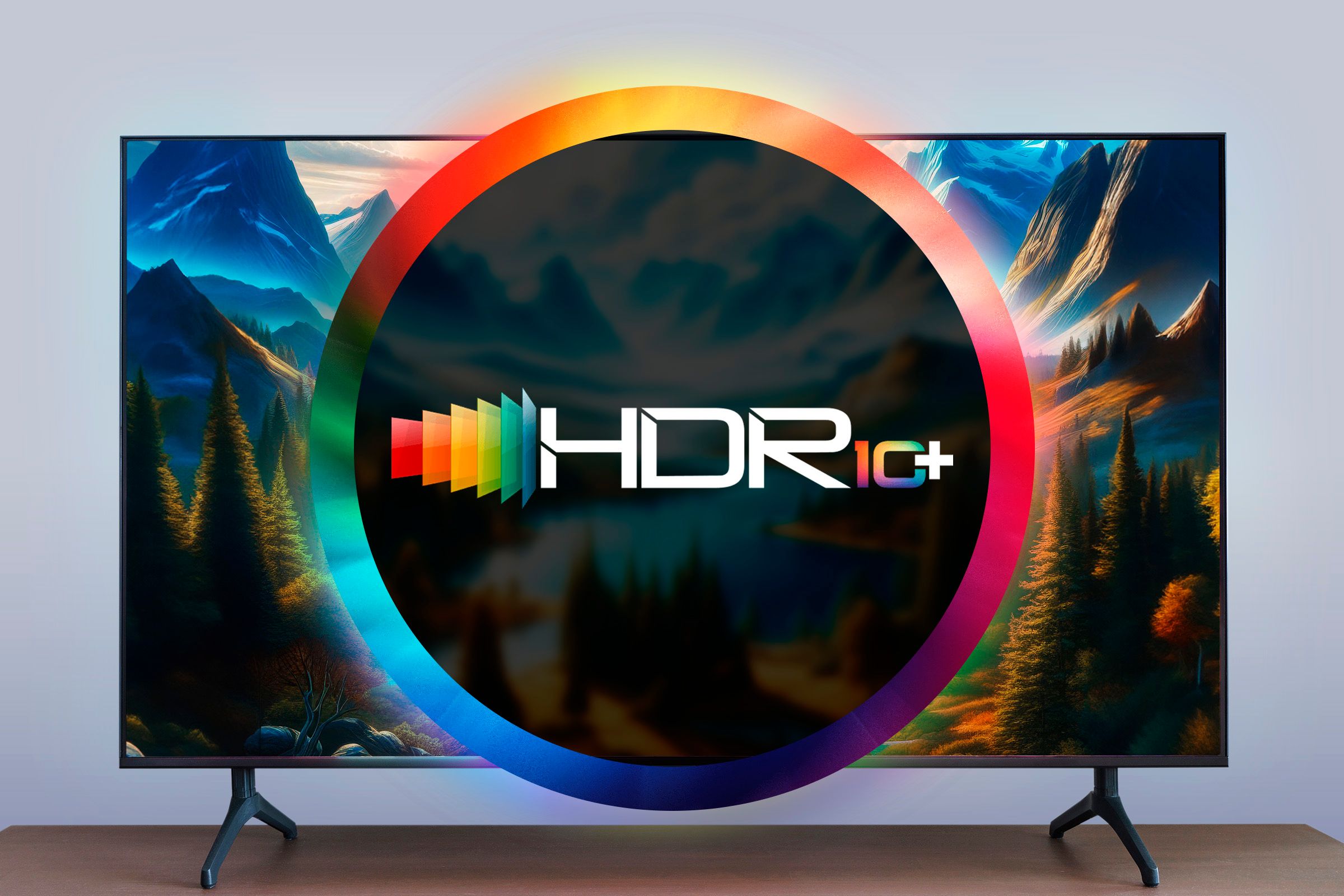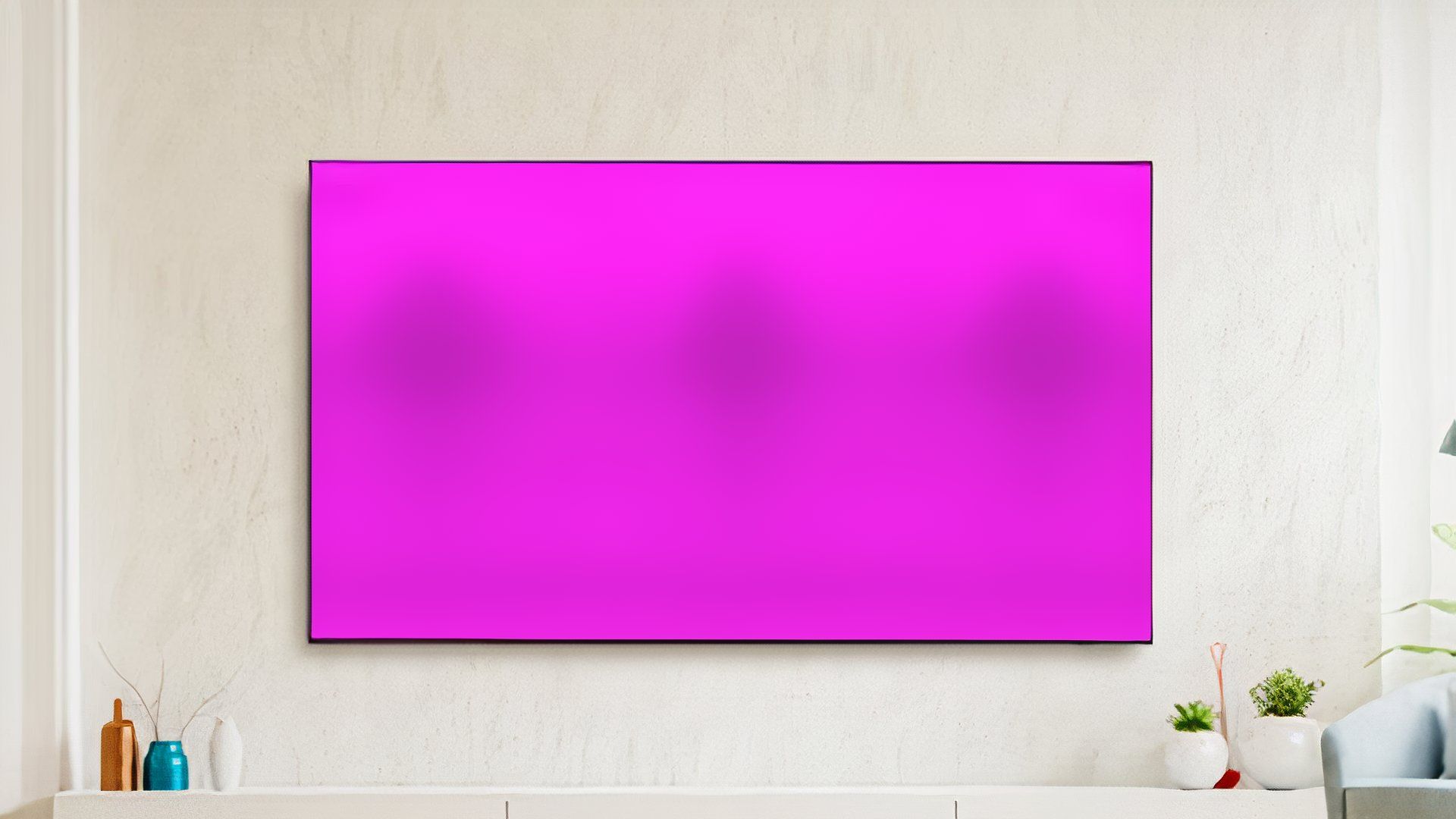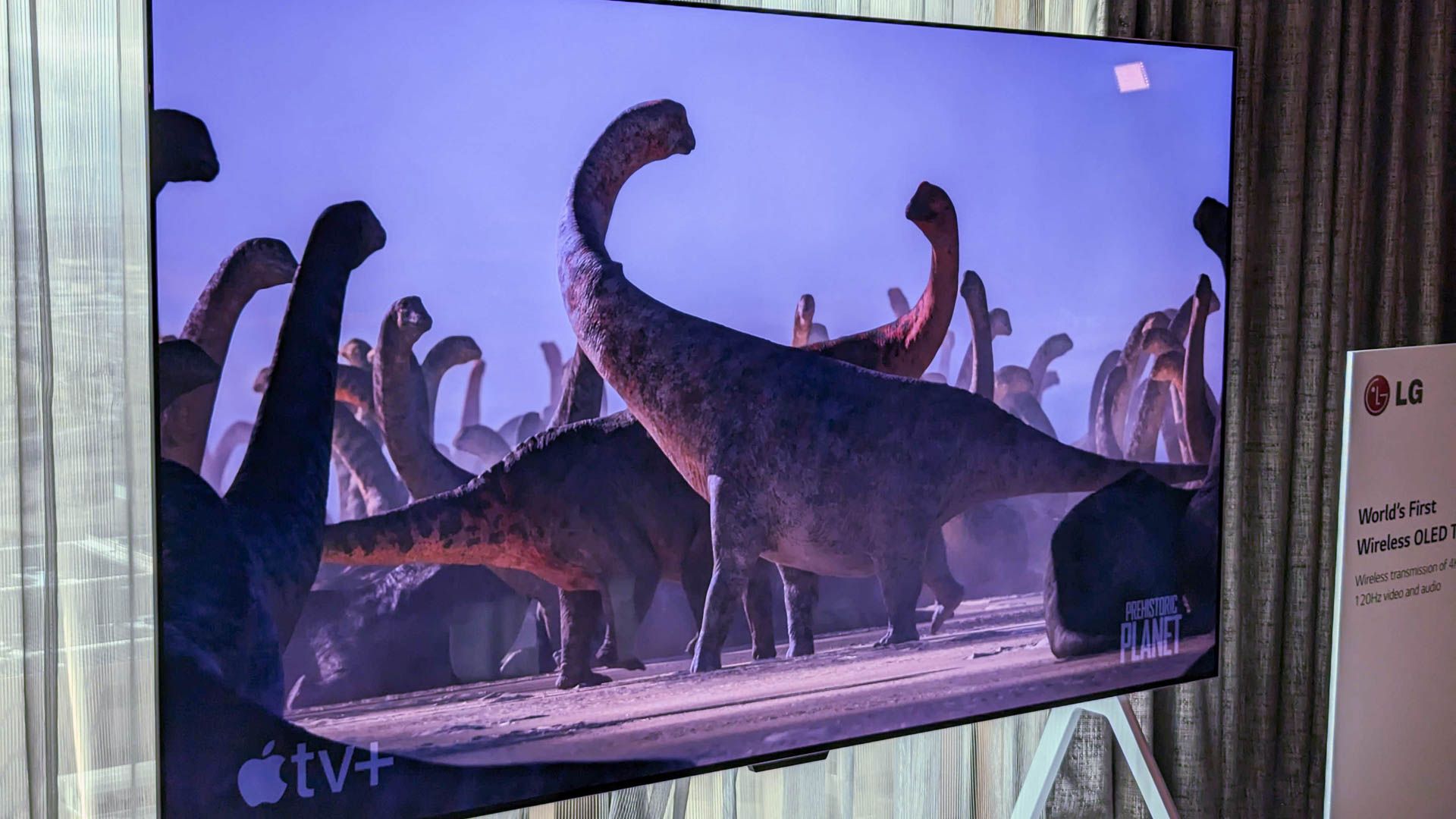There’s little argument that if you want the best picture quality money can buy, an OLED TV is hands-down the best choice. However, there are now different variants of OLED technology on the market, each with their own strengths and weaknesses.
One of the main choices you’ll have to make when choosing your next OLED TV is whether you want WOLED or QD-OLED technology. I’ll explain what the difference is between these two OLED designs, and how they differ in the most important areas.
What Are QD-OLED and WOLED Displays?
QD-OLED is short for Quantum Dot Organic Light-Emitting Diode and WOLED is short for White Organic Light-Emitting Diode. WOLEDs are also referred to as “WRGB” OLEDs because of their pixel substructure, but we’ll get to that in a minute.
As of this writing, all OLEDs produced by LG under its own name are WOLEDs, while Samsung is the company that introduced QD-OLED technology.
How the Technologies Work: White OLED vs Quantum Dots
In a WOLED display, all the LEDs emit white light. In order to get the red, green, and blue light necessary to create any color some of these white OLEDs have color filters that result in an RGB result. WOLEDs also have an unfiltered white OLED as part of the subpixel structure.
A QD-OLED looks completely different from a WOLED at the subpixel level. Instead of being based on white OLEDs, QD-OLEDs are based on blue OLEDs. Blue light is highly energetic because of its short wavelength, and so it can be used to stimulate quantum dots.
Simply put, quantum dots are a breakthrough in display technology where a single material can be made to emit different wavelengths of light depending on how much energy is absorbed and released.
In a QD-OLED, these blue OLEDs have a portion of their light converted to red and blue by passing through a quantum dot layer. The main benefit of this approach compared to OLEDs is efficiency. WOLEDs waste a lot of energy and lose brightness because they start with full-spectrum white light, and then block large portions of it to get the necessary colors. QD-OLEDs convert blue light into red and green light as needed, losing very little energy and brightness. They also lack a white subpixel element.
Color Accuracy and Saturation
All OLEDs are capable of amazing color accuracy and saturation and when it comes to covering standard color gamuts like DCI-P3 there’s nothing wrong with going with either panel type.
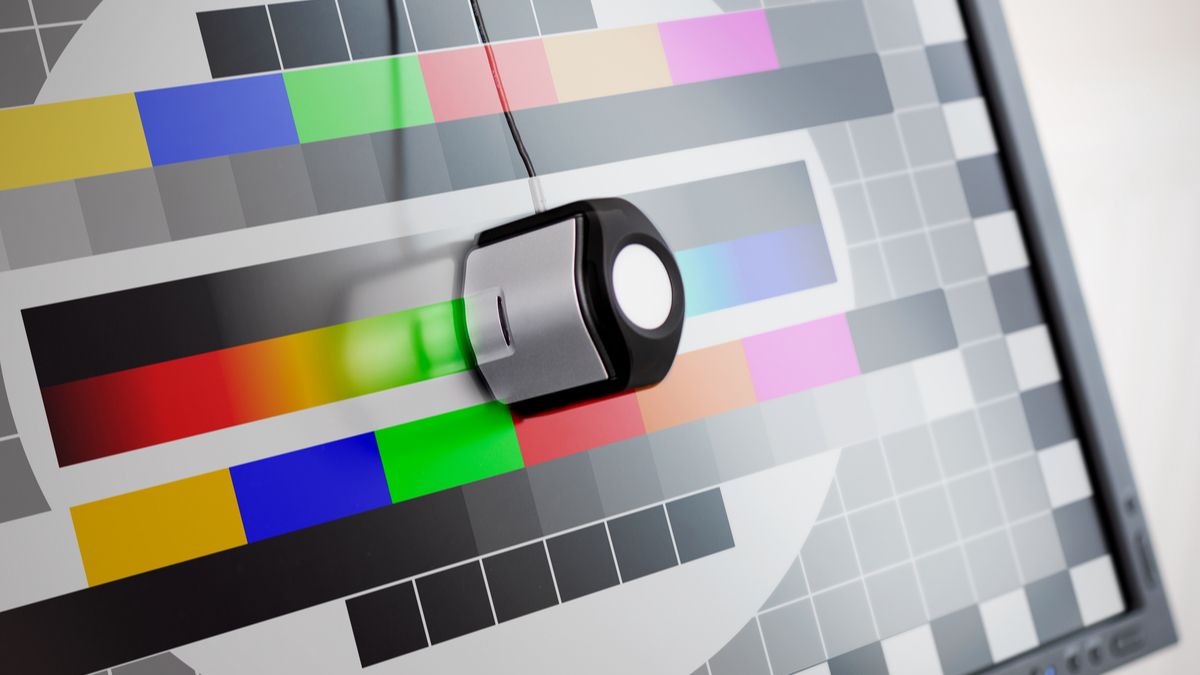
Related
However, QD-OLED offers a significantly wider color gamut at the extremes of the range. In terms of color volume and saturation, QD-OLED offers much more of both. Since QD-OLEDs don’t rely on a separate white subpixel, it can display intense, bright colors without washing it out with white light. In a WOLED, you need to add more white light to increase brightness, and this affects color purity the brighter you go.
If we look at the Rec.2020 color gamut, which is much wider than DCI-P3, then a modern Samsung QD-OLED can hit numbers like 86%, whereas an LG WOLED offers only up to 75% of that gamut. Because of how QD-OLED works, it’s more spectrally pure, and so when it comes to saturated colors like emerald green, it’s going to do a better job of reproducing them.
Brightness and HDR Performance
While OLEDs are inherently the kings of contrast and black levels, for most of their existence LCD technology has been capable of far higher levels of brightness. Recent models of OLED (from around 2023 onwards) have been addressing this issue big time. While OLED TVs still can’t match high-end LCD TVs using QLED and miniLED technology, they are beating out mid-range LCDs on brightness, which is quite a feat.
WOLEDs, in particular, can produce a bright image thanks to that unfiltered white subpixel, but of course with the color purity drawbacks I mentioned earlier. The latest WOLEDs are using an ingenious micro lens technology to funnel some of the light that gets lost thanks to the filtering process and internal panel reflection back to the viewer, which means peak brightness levels well in excess of 1000 nits are possible on modern WOLEDs from LG.
It’s a bit more complicated with QD-OLEDs. Samsung’s comparable models using QD-OLED technology dont’t get quite as brights as WOLEDs when it comes to pure white, but when it comes to vivid colors they get significantly brighter. In either case you’re getting more than enough brightness for stellar HDR, but the claimed peak brightness of the latest and future QD-OLED TVs from Samsung can reach 4000 nits in a 3% window. Not to be outdone, LG’s second-generation WOLEDs using micro lenses are aiming for 3000 nits or better.
The bottom line is that both technologies are plenty bright, but I’d give the edge to QD-OLED here because it maintains better color purity at high brightness levels.
Viewing Angles and Uniformity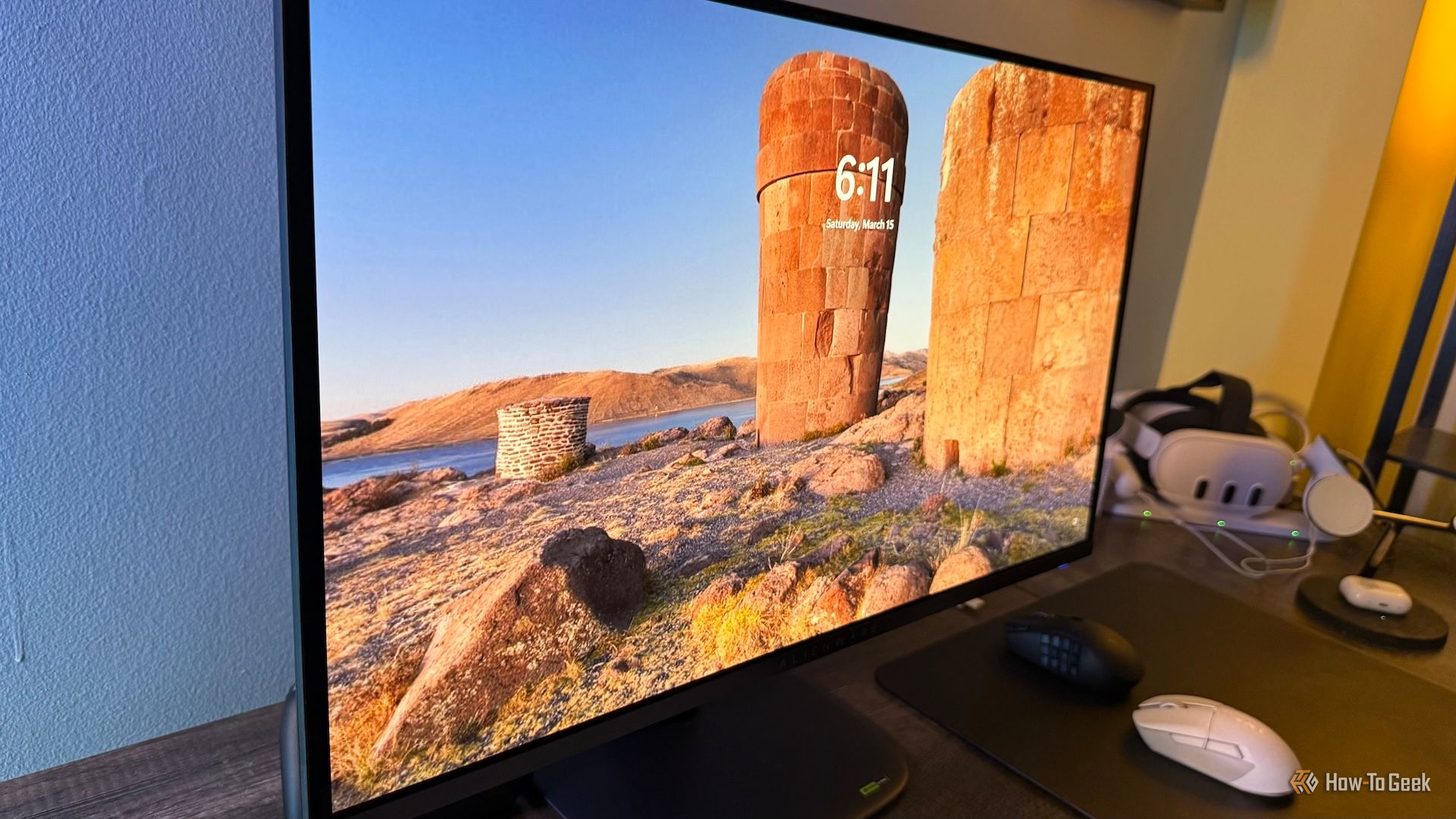
OLEDs of any type have the best viewing angles and panel uniformity of any current display technology. So no matter which type of OLED you go for here, you’ll have nothing to complain about.
That said, the two OLED types differ from each other here. Both WOLED and QD-OLEDs have essentially perfect consistency from any viewing angle, but some early QD-OLEDs had an anti-reflective coating that caused a pinkish tint at extreme angles. This is an issue that showed up with the Samsung S95B. However, it was hardly a deal-breaker, and the problem has been resolved in later models. If you’re looking at buying a QD-OLED, it’s easy enough to check for this yourself, if it bothers you.
As for panel uniformity, OLEDs are in a different universe than LCD TVs. If you want to nitpick, there can be minor uniformity issues with individual OLED panels, but you’ll have to look for it. If it’s readily visible in normal viewing you probably have a faulty panel. There can be ever so slight vertical banding in near-black or dark gray scenes, but again this shouldn’t be visible during normal viewing.
Burn-In Risk and Panel Longevity
“Burn-in” or image retention happens when some parts of the panel are subjected to long periods of static imagery. Channel logos, game HUD elements, or watching hours and hours of content with the same black bars are all examples of use cases where burn in is more likely.
This has been the bane of OLED technology from the outset, but after years and years of development, modern panels have plenty of built-in protection systems, self-maintenance algorithms known as a “compensation cycle”, and simply improvements to the resilience of the panels themselves.
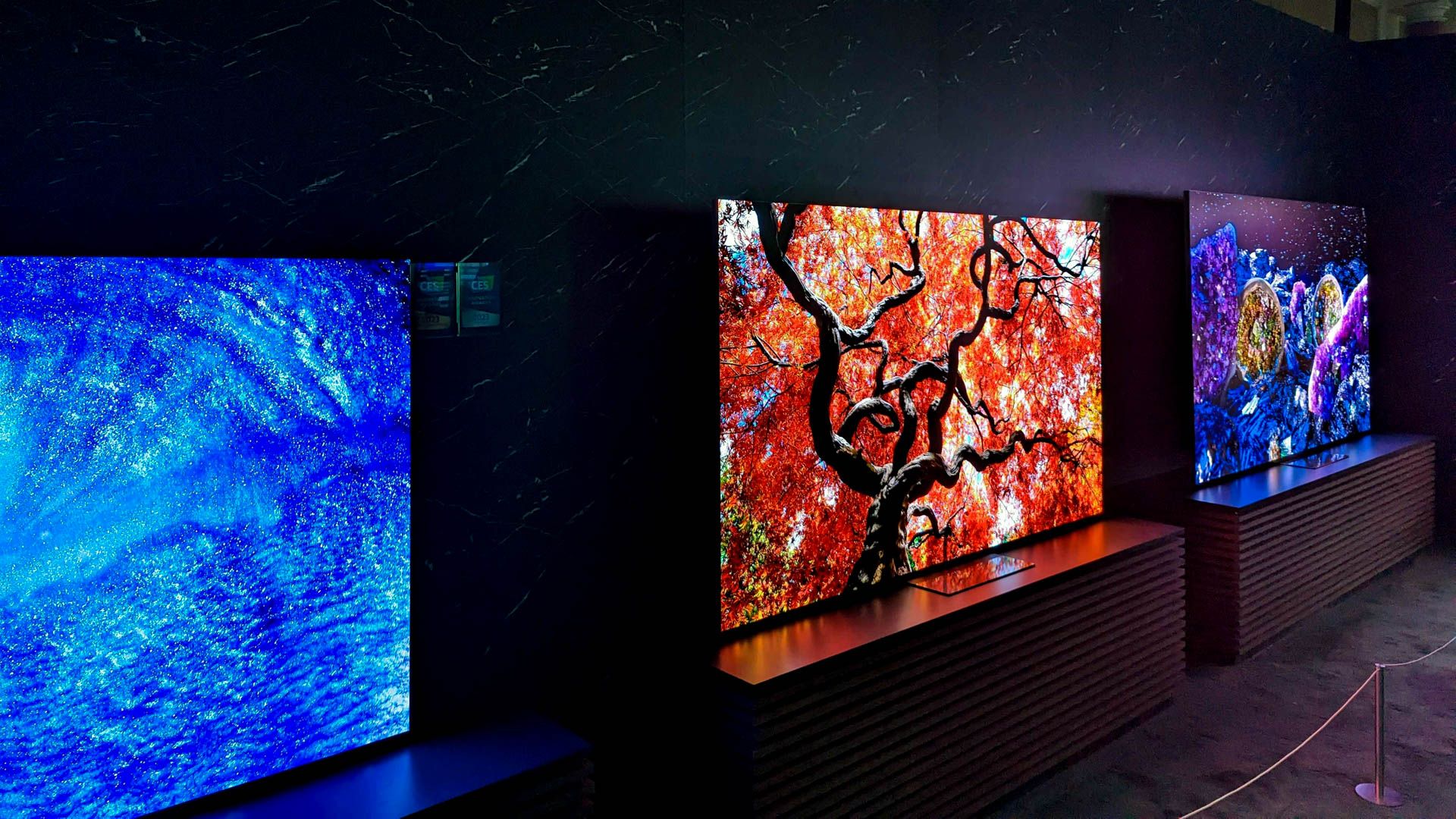
Related
What Is a “Compensation Cycle” in OLED TVs?
Your TV is compensating for something, and your picture is better for it.
So, personally, I wouldn’t really worry about burn-in on a modern OLED TV, as long as you watch a mix of different types of content. If, for example, you leave it on the news day-in and day-out, you might get burn in. If you only play one game for hours a day, every day, you might get some burn in.
That said, while QD-OLEDs haven’t been around long enough for conclusive data, RTings.com has been running a torture test and the Samsung S95C QD-OLED has shown basically no signs of burn-in, unlike its direct predecessor. The latest generation LG WOLED in that same test does show image retention, so right not it seems QD-OLED technology in recent models and going ahead will be much better for image retention, but only time in the real world will tell.
Black Levels and Contrast
As I mentioned earlier, all OLEDs have essentially perfect black levels, so there’s not much to differentiate QD-OLEDs from WOLEDs. Off is off, after all. Some older OLEDs have issues at levels just above black, which I’ve already mentioned as part of panel uniformity, but this has been largely resolved in recent years. If you buy a new QD-OLED or WOLED TV today, you’ll get essentially the same reference-quality black levels and contrast.
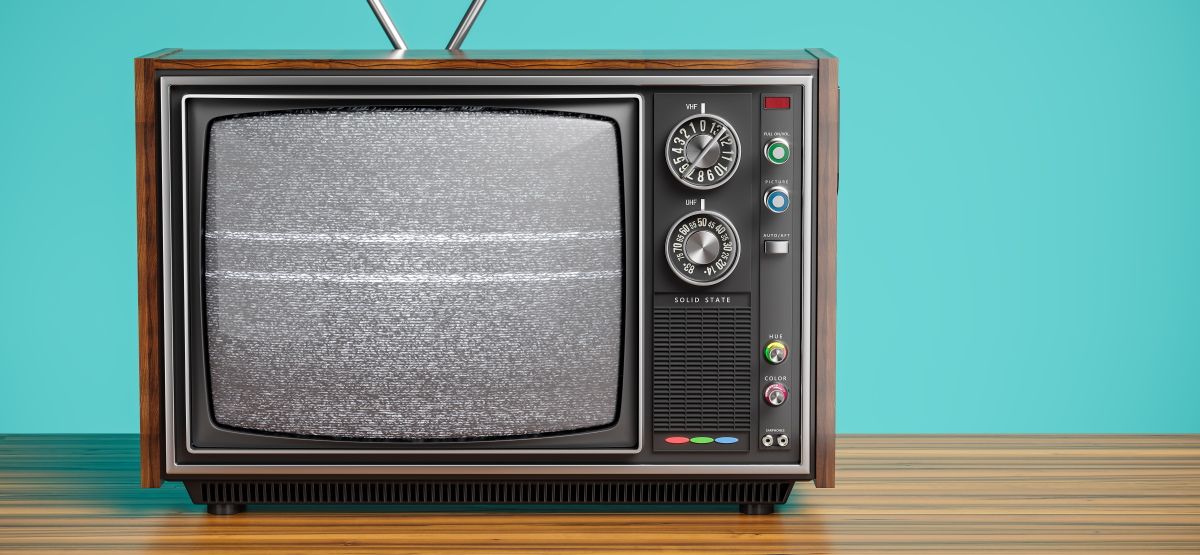
Related
Power Efficiency and Heat Output
There’s not much to say here other than QD-OLEDs are significantly more power efficient than WOLEDs because of their fundamental design as discussed above. Moreover, Samsung has done a pretty good job of making them even more efficient over the years, but even if you get an older, less efficient model, it should still beat the typical WOLED in this department handily. Though I do appreciate my LG CS helping to keep us warm in the winter!
Manufacturers and Availability
WOLEDs come from LG, and QD-OLEDs from Samsung. So you’ll know what you’re getting based on the branding. However, both of these companies supply panels to other TV and monitor makers, so you might have to do some digging to see which panel is in, for example, a PC monitor or a TV made by companies like Hisense or Philips.
Before 2022, pretty much every OLED was a WOLED and among current models this is still the most common type of panel. It’s also worth noting that, as of this writing, Samsung doesn’t make 16:9 QD-OLED panels smaller than 50-inches. Sony has Bravia models using QD-OLED, and Dell Alienware monitors using QD-OLED are on the market as well.
Since QD-OLED technology is newer, there’s obviously going to be fewer options available than the more established WOLED tech, but I expect that will change as production ramps up.
Price and Target Market
WOLEDs are the best budget option right now. Since it’s a technology that’s been around for a long time, there are WOLEDs in every price bracket. For example, LG’s A- and B-series TVs are priced very well and give you all the inherent benefits of OLED technology, but might lack fancier features such as micro lenses or variable refresh rate support.
There are QD-OLEDs in the mid-range, such as the S90C, which is price competitive with mid-range LG OLEDs, especially with common sizes like 55 and 65 inches.
For premium TVs at large panel sizes, both OLED technologies are still so expensive that you can just pick your poison on a model-by-model basis. Either way, it’s going to hurt!
I’d love to hand out advice here, telling you to always buy a QD-OLED or WOLED TV, but the truth is that both technologies produce fantastic TVs and monitors. There are tradeoffs to both technologies, and, personally, I think QD-OLED is broadly superior, but when the price is right there’s zero reason to avoid a WOLED. So, as always, evaluate a TV holistically for its real-world performance, and most importantly—evaluate a TV with your own eyes before buying it!


